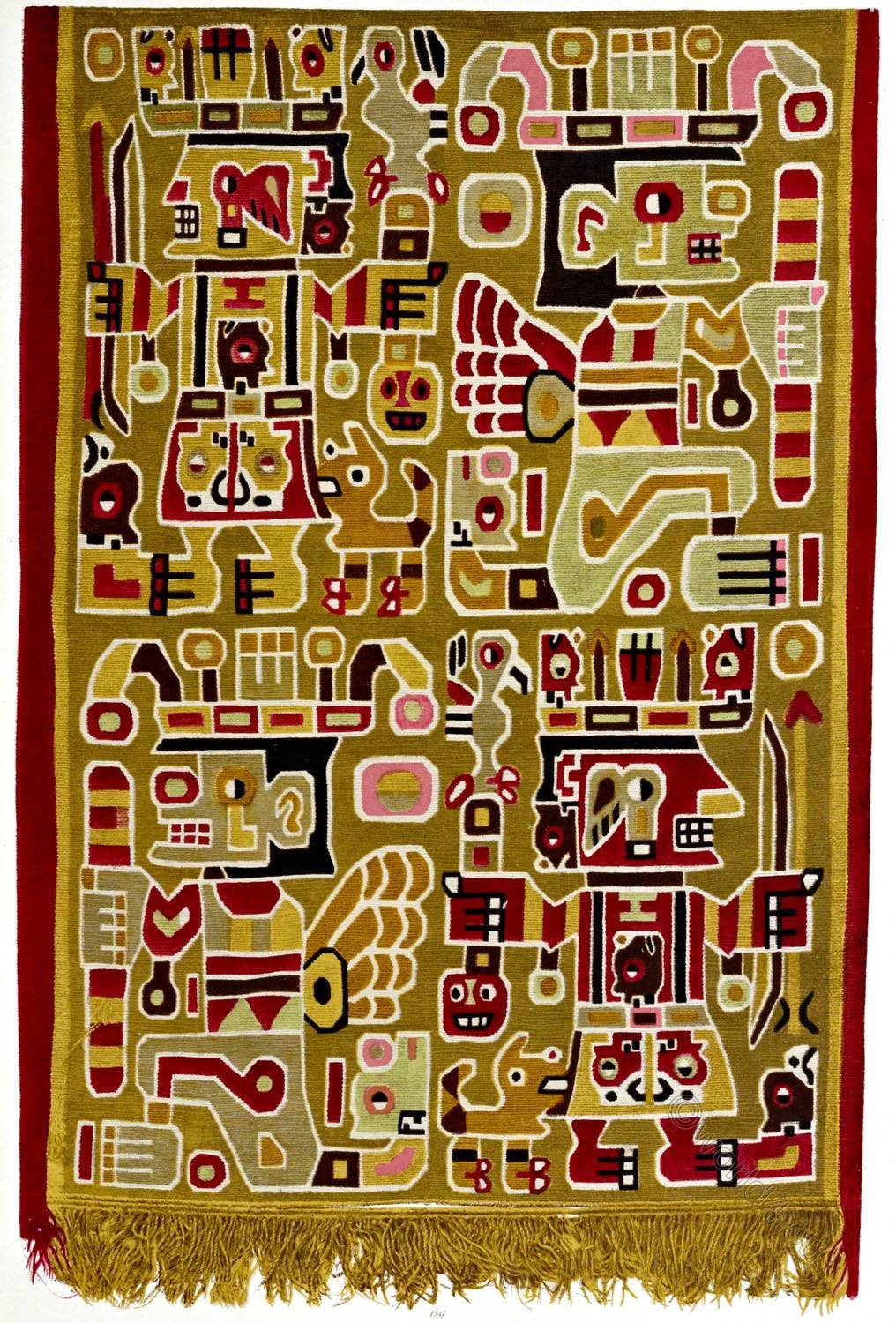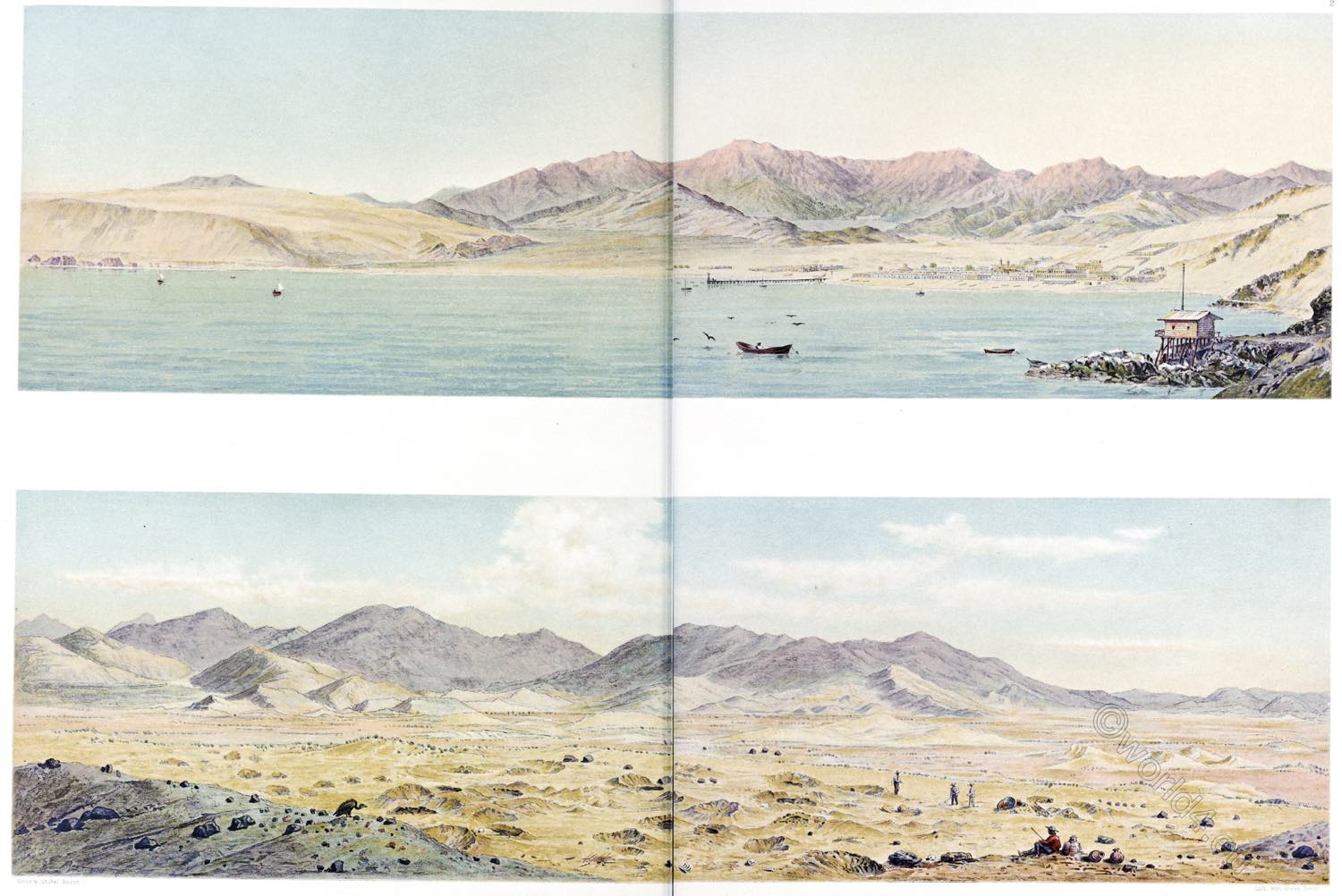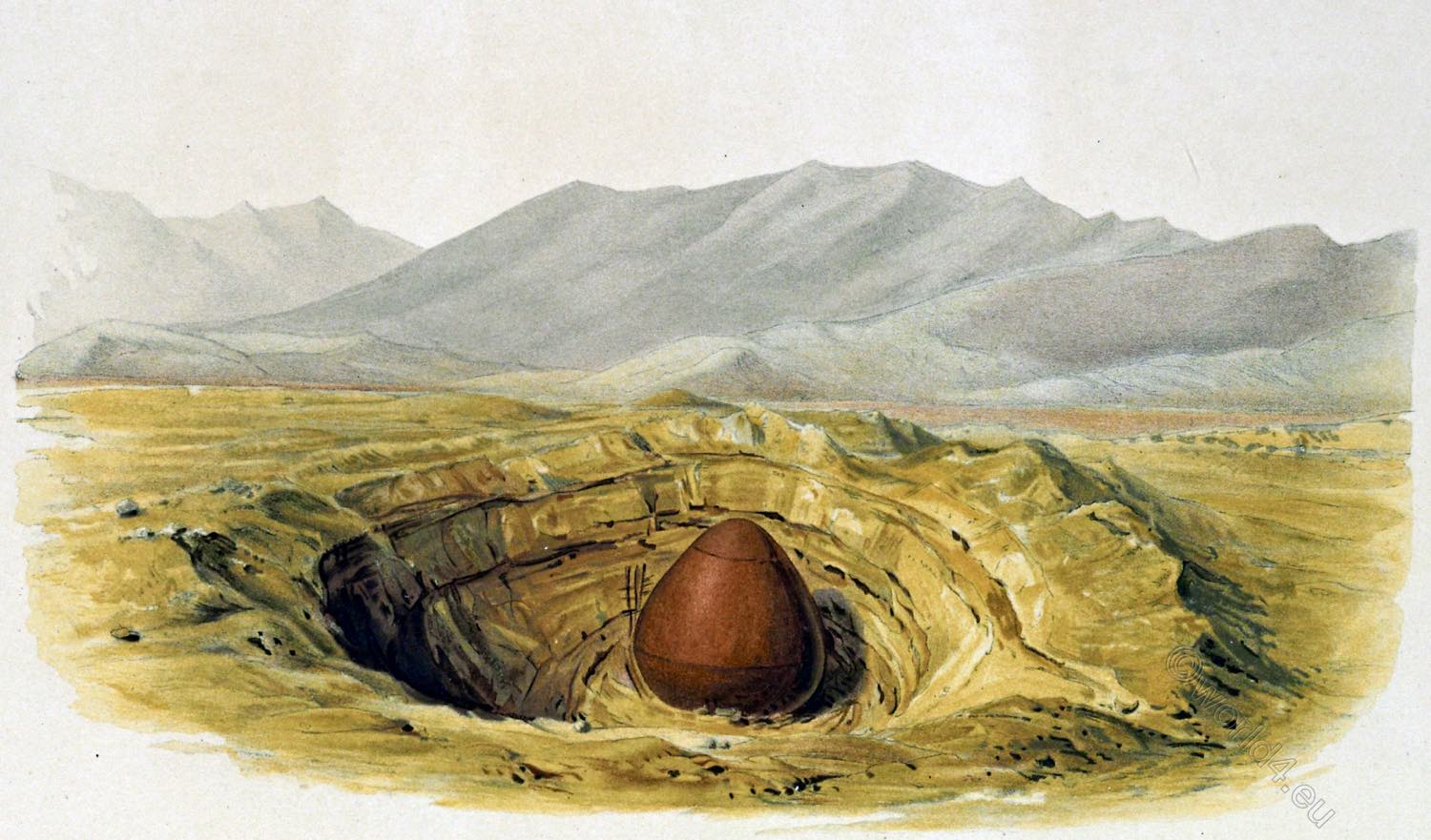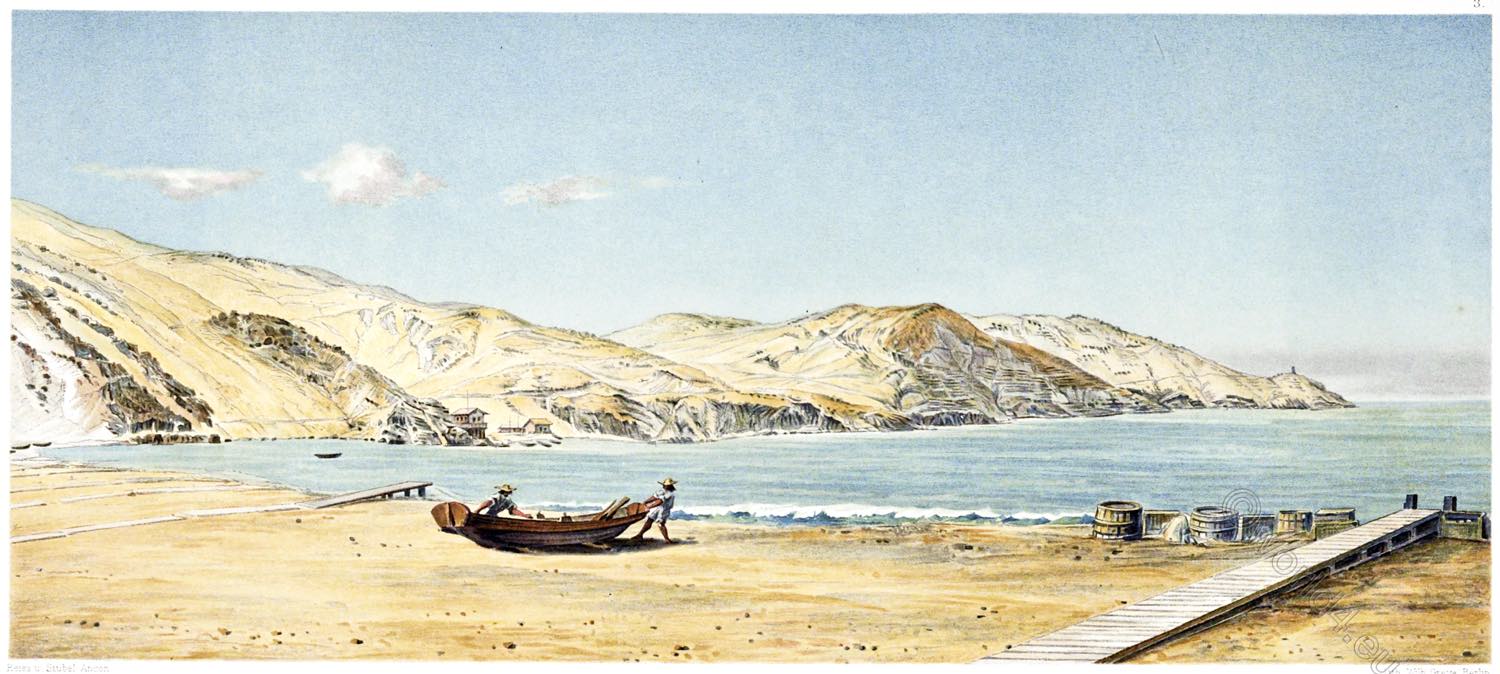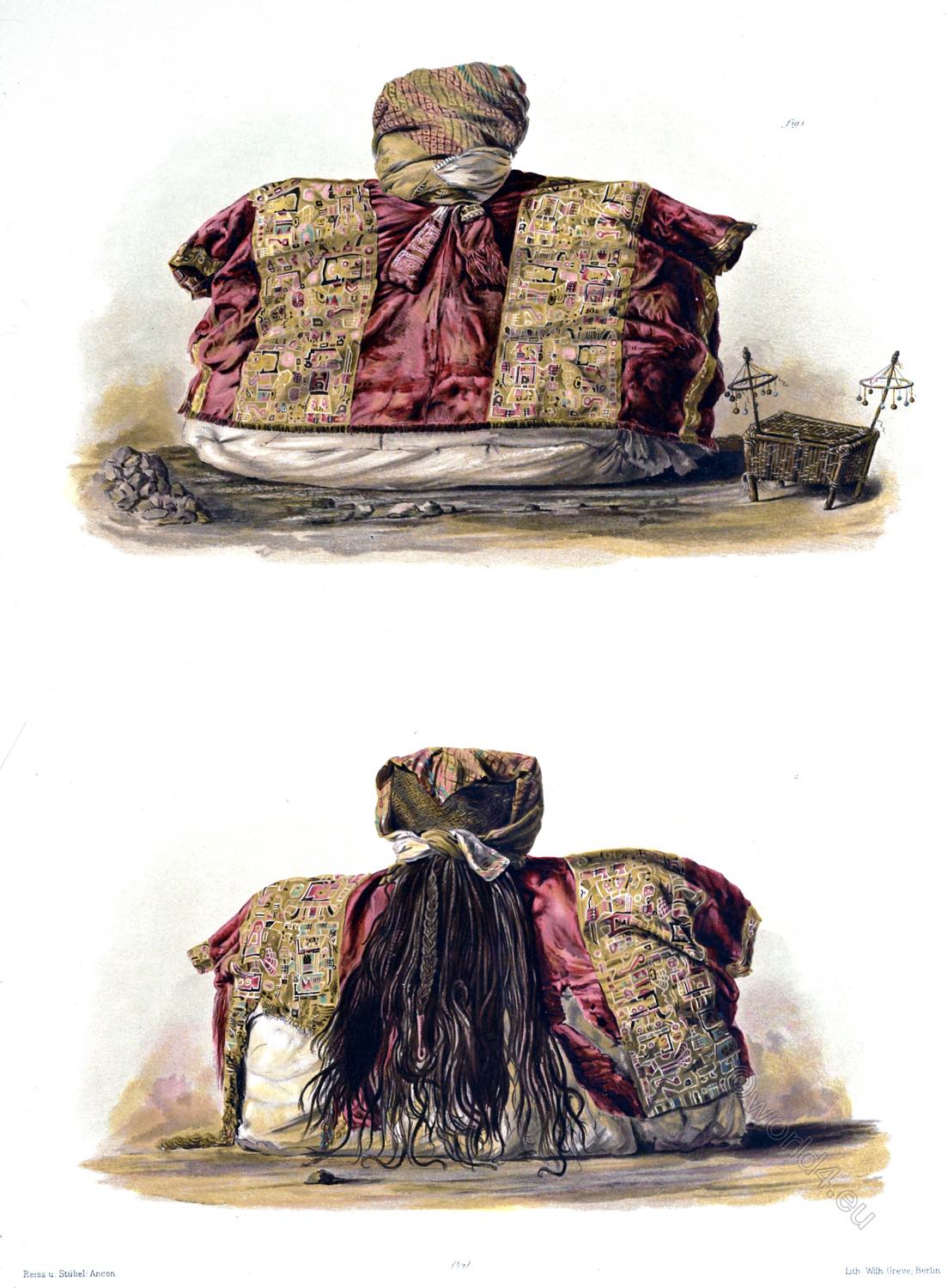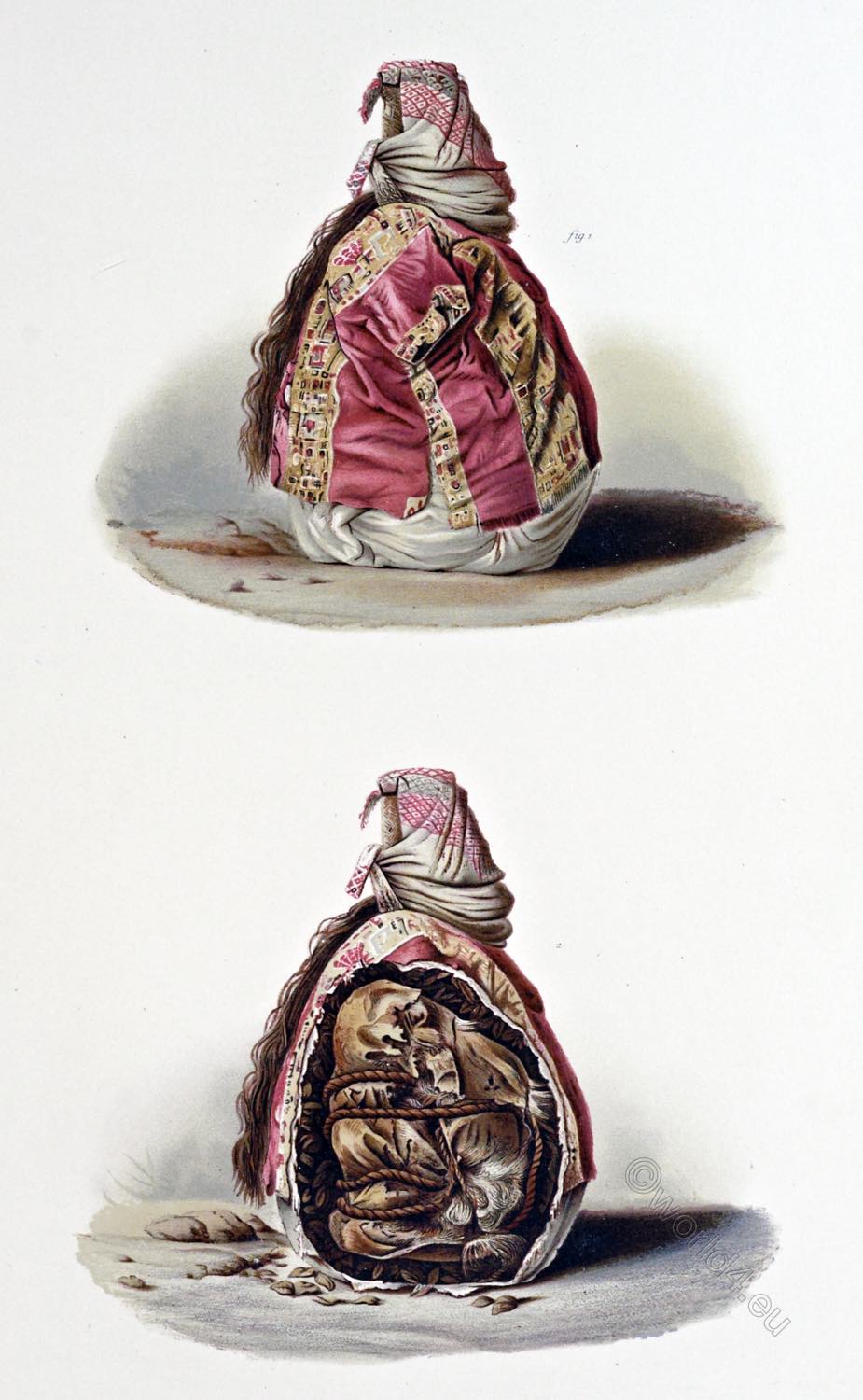
III. The Mummies in their diverse equipment.
a. False-headed Mummies.
SIDE VIEW AND SECTION OF THE MUMMY FIGURED ON PLATE 16.
PLATE 17.
Fig. 1. The peculiar form of the richly arrayed mummy pack is clearly shown in the present illustration, which supplements the front and back views of the same mummy reproduced on Plate 16.
Although corresponding in form and arrangement with the Poncho still worn in Peru, as mentioned in the description of the previous Plate, the richly ornamented garb differs from it so far that the large square piece has been stitched together on both sides, leaving only short slits for the arms. (See Plates 35—40.)
Fig. 2. Section of the outward and perspective view of the inner portion of the mummy represented in Figure 1. On removing the outer portion of the cerements, that is, the handsome dress, together with the coarse sack containing the implements and the layer of leaves on which they rest, a bundle is exposed to view tied up in a skin, and usually containing the body packed in cotton and corded, as shown on Plates 19 and 20.
But in the present case the bundle contains the bones of a human skeleton no longer connected together, but packed up in a small space. It would therefore appear as if some older body, which had already fallen to pieces, had been dug out and again consigned to the grave in a fresh and carefully prepared equipment. Many peculiarities of the Ancon graves point at such opening and re-burial of those who had long departed this life, and the practise is continued and explained by the religious customs of the inhabitants of this coast, as handed down by tradition.
Source: The necropolis of Ancon in Peru: a contribution to our knowledge of the culture and industries of the empire of the Incas being the results of excavations made on the spot by Wilhelm Reiss (1838-1908); Alphons Stübel (1835-1904), joint author; Wilhelm Greve, lithographer; Augustus Henry Keane (1833-1912), translator; Ludwig Wittmack (1839-1929); Rudolf Virchow (1821-1902); Alfred Nehring (1845-1904). Berlin: A. Asher & Co.; New York : Sole agent for America, Dodd, Mead & Company, 755 Broadway, 1880.

